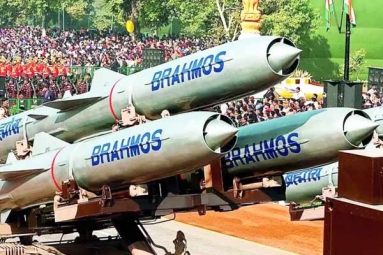
(Image source from: Twitter.com/adgpi)
Unlike previous Indian military actions such as the 2016 Uri surgical strikes or the 2019 Balakot airstrikes, which were characterized by their limited reach and scope, Operation Sindoor represented a significant evolution, showcasing advanced technology and a wide-ranging execution that had never been attempted before by India. The operation's decision to conduct strikes deep within Pakistan-occupied areas indicated a significant shift from India’s earlier military strategies. Not only did Operation Sindoor go beyond the previous cross-border strikes following Balakot, but it also highlighted a transformation in India's strategic approach. A government source commented, "The magnitude of militant casualties conveyed a powerful warning to terrorist groups and their sponsors. India is now asserting its right to carry out preemptive strikes, with no target considered unreachable."
The strikes were a direct response to the terror attack on April 22 in Pahalgam, Jammu and Kashmir, where 26 civilian lives were lost. Intelligence agencies attributed this attack to Lashkar-e-Taiba (LeT), a Pakistani terrorist group notorious for its attacks on Indian citizens and military personnel. Therefore, Operation Sindoor was designed not merely as a retaliatory measure but aimed at crippling the logistical and operational capabilities of terrorism emanating from Pakistan. This mission involved operations at nine different sites across Pakistan and Pakistan-occupied Kashmir, targeting locations such as Muzaffarabad, Kotli, Bahawalpur, Rawalakot, Chakswari, Bhimber, Neelum Valley, Jhelum, and Chakwal. The operation culminated in a total of 24 missile strikes, marking the largest single-day precision action ever carried out by India.
#OperationSindoor | Indian Army releases videos of Indian strikes on Pakistani terror camps. Nine terrorist camps were targeted and successfully destroyed.
— ANI (@ANI) May 7, 2025
(Videos Source: Indian Army) pic.twitter.com/oO1giR1xFC
According to the government source, "More than 70 militants were confirmed dead, with over 60 others sustaining injuries during the coordinated strikes." Each of these sites had been extensively monitored in advance. Indian intelligence utilized a combination of satellite imagery, human intelligence, and intercepted communications to pinpoint the use of specific locations by terror factions like Jaish-e-Mohammad (JeM) and Lashkar-e-Taiba (LeT). These structures were identified as centers for ideological indoctrination, ammunition storage, logistical support, and planning for sleeper cells. Surveillance drones had extensively monitored these areas days ahead to track movement and activity consistent with terrorist operations.
Operation Sindoor involved a collaborative effort from the air, naval, and land forces. The operation employed air-launched SCALP cruise missiles, HAMMER precision-guided bombs, and kamikaze drones, which were deployed from Indian Air Force aircraft operating well within Indian territory and supported by mid-air refueling and airborne early warning systems. SCALP missiles, which have a range exceeding 250 kilometers, targeted fortified locations, including bunkers and command centers. In addition, HAMMER bombs were utilized against multi-storey structures believed to harbor training facilities and key leadership. The kamikaze drones served a dual purpose by providing real-time surveillance and engaging high-value mobile targets as they surfaced.
"A little under an hour was all it took for the missiles to hit their targets. The strikes were meticulously coordinated to evade detection, ensuring maximum surprise. Footage captured by UAVs confirmed the destruction of intended facilities. This decision to strike deep into Pakistani-controlled territory represents a notable departure from past protocols and illustrates a new level of strategic assertiveness," stated a government source.



















